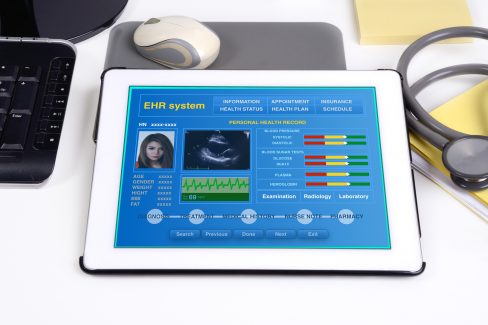April 6, 2023
The cloud ceiling keeps rising. We refer here, of course, to the computational rather than the meteorological — to the accelerating cloud migration of SMBs and enterprises in a variety of verticals. An increasingly integral part of business operations, cloud computing has morphed from might-try to must-have. It’s no surprise, then, that the global public cloud market — led by Amazon Web Services, Microsoft’s Azure and Google Cloud Platform — is expected to hit nearly $600 billion this year and more than $880 billion by 2027. Between now and 2030, it could exceed $1.5 trillion.
“It is a strong testament to the benefits of cloud computing that despite two major obstacles to growth the worldwide market still expanded by 24% from last year,” told Insider Monkey earlier this year, referring to solid Q3 results. “Had exchange rates remained stable and had the Chinese market remained on a more normal path then the growth rate percentage would have been well into the thirties.”
Cloud usage among SMBs in particular is expanding, too. Based on data from the analyst firm IDC, Amazon’s AWS division issued some not-so-subtly self-serving predictions for the sector. One of them was that by 2025, “30 percent of SMBs will shift half of their core workloads to the cloud to drive business agility and future resilience…Cloud will no longer be considered a location just where data is stored and accessed, but rather an operating model. SMBs will leverage the agility provided by cloud to quickly deliver at scale on rapidly changing requirements from internal and external stakeholders….SMBs have been largely adopting cloud to reduce capital expenditures and drive efficiency, whereas larger organizations are looking to derive greater value from modernizing applications and infrastructure, launching new digital products and services, and adopting new technologies, such as AI and ML.”
According to Nick Stover, Mindsight Solution Architect, “Enterprise companies have been adopting cloud for nearly two decades, but the SMB space has been slower to make the transition, mainly because of implications of variable cost combined with a lack of in-house talent to lead the initiative – and in some ways, a lack of understanding of cloud technologies and offerings. We’re seeing this thought process shift recently as SMB’s are starting to see the benefits of migrating their infrastructure and are now willing to take the plunge into a cloud hosting model, especially financial and professional services firms, manufacturers, and healthcare organizations.”
Now that you have some general context, let’s segue into the real focus of this article: Which verticals are ramping up their cloud computing, and which mission-critical applications are they moving in the process?
![]()
Banking
Historically wary and skittish when it comes to new technology, the highly regulated and security-obsessed industry has slowly but steadily opened itself to the cloud for quicker AI-assisted data analysis, improved customer relationship management, and more rigorous fraud detection. “Sometimes a new product or an investment should simply be considered table stakes – meaning there’s no need to do analysis at all,” JP Morgan chief Jamie Dimon wrote in the company’s 2020 annual report. “Think about banks adding the capability of opening new accounts digitally, for example, or maintaining a strong technology infrastructure and adopting new technologies, like cloud or artificial intelligence (AI). These could be life-or-death decisions for a company, so instead of focusing on net present value, the emphasis should be on getting the work done properly, efficiently and quickly.”
According to Accenture, only around 12 percent of banks are currently in the cloud, but that’s expected to double by 2025. “David M. Solomon, the chief executive of Goldman Sachs, is optimistic about financial-services firms moving into the cloud,” the New York Times wrote in early January. “However, ‘it’s got to be done with high levels of security and real protection of data and information. That’s why you’ve got to go slowly and you’ve got to go cautiously.’”
Healthcare
A much quicker adopter of new technology than banking (granted, that’s not saying much), the healthcare sector is getting even more cloud-centric. Global market size is expected to hit $127 billion by 2030, more than a third of that growth driven by U.S. users. As several healthcare IT leaders told Becker’s last fall, the cloud is a priority even as other areas suffer cutbacks.
“We are making seismic transitions away from on-premise equipment to cloud environments to lower our risk profile with better resiliency and availability, especially given our proximity to sandy shores and hurricane probabilities. The transition to the cloud also supports recapturing hospital real estate — once used for a data center — and repurposing that space for clinical coordination or accretive use. Cloud projects are powering forward,” says Scott Arnold, Executive Vice President and CIO of Tampa Florida General Hospital.
James Wellman, Chief Digital and Information Officer of Blanchard Valley Health System in Findlay, Ohio, states “We are not paring back on our cloud migrations, and we are doing the opposite by seeking to push the migration at a quicker pace. We feel that the long-term wins with increased cloud-based systems offset any short-term costs we may have now. The expanded cloud options allow us to utilize associates from multiple locations, and we are not confined to on-premise resources.”
“We see increased spending in our cloud environments annually and predict it will continue to accelerate in fiscal year 2023 and beyond, for both software as a service (SaaS) and public cloud. Stanford Health Care recently completed a data center consolidation project, moving from five data centers to two co-location facilities and increasing our footprint in the cloud.” (Christian Lindmark, Chief Technology Officer of Stanford Health Care in Palo Alto, Calif.)
Clinical and non-clinical applications that are moving toward or now live in the cloud include telehealth solutions, computerized physician order entry, electronic medical records, claims management and several others.

Education
Cloud computing increased at all educational levels during the Covid-19 pandemic, when millions of school kids were relegated to remote learning. But it’s most significant growth is in the sub-category of higher education — colleges, universities, trade schools. According to a study by Astute Analytica, the market is well on its way to a $15 billion valuation by 2030. That’s based on a substantial anticipated CAGR of 22 percent. As a summary of the report encapsulated it, “Cloud computing in higher education centrally manages the various business processes such as student and course management, helps teachers in uploading learning materials, students to access their homework, administrators to easily collaborate with each other and library management among others.”
In a write-up on Govtech.com, an IT leader at the University of Maryland — Baltimore County, was bullish on cloud migration for many key applications. The school already has moved its email system and other internal systems to the cloud, he said, “simply because, obviously, it’s much easier for the university IT system to have support from cloud providers as opposed to managing and maintaining a large data farm. We also have internal data systems still on for doing research and things like that. We’ve been increasingly exploring cloud providers for our research, especially when we have large data sets to analyze, and in a cost-effective manner.”
So that’s the lowdown on three of the biggest verticals that are moving quickly toward, and being transformed by, cloud computing. There are many others, of course, including entertainment, retail, automotive, real estate and insurance.
“Businesses now not only have a strong motivation to deliver timely insights from their data, but also a foundational drive to remain competitive in a hugely disrupted competitive landscape,” Suresh Vittal, chief product officer at Alteryx, wrote in TechRepublic last fall. “2023 is the year when cloud computing finally meets its true potential — combining both usability and widespread accessibility.”
About Mindsight
Mindsight, a Chicago IT services provider, is an extension of your team. Our culture is built on transparency and trust, and our team is made up of extraordinary people – the kinds of people you would hire. We have one of the largest expert-level engineering teams delivering the full spectrum of IT services and solutions, from cloud to infrastructure, collaboration to contact center. Our customers rely on our thought leadership, responsiveness, and dedication to solving their toughest technology challenges.
Contact us at GoMindsight.com.
About The Expert
Nick earned a Bachelor’s in Computer Science with a core focus on Network Security from Northeastern Illinois University. With over 10 years of comprehensive experience in designing, supporting, and administering IT system infrastructure, Nick has a vast amount of experience in migrating production workloads to the cloud in addition to designing cloud solutions for clients based on business needs.
Cloud Migrations In Your Future?
Cloud computing isn’t going anywhere. Ensure you have the right cloud computing strategy with a partner that’s worked with cloud since those early days.
Our Cloud Insights Report is a mini-assessment, giving you insights into your current on-premise and cloud infrastructure along with top recommendations for optimizing your current and potential workloads.
See what we can do for you. Contact us today.



